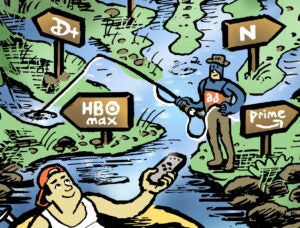 “On TV And Video” is a column exploring opportunities and challenges in programmatic TV and video.
“On TV And Video” is a column exploring opportunities and challenges in programmatic TV and video.
Today’s column is written by Todd Tran, global senior vice president of mobile and programmatic at Teads.
How do you determine whether a video ad campaign is successful? Especially when buyers of video inventory all seem to have different metrics when buying video? Some metrics make sense, and others are questionable.
I believe most video advertising for brand campaigns should be measured on one metric that encapsulates the key goal of a video ad: to get people to watch it.
Some buyers, however, only look at the completion rate of a video campaign and remove sites and apps with low completion rates. This is a flawed metric because it does not take into account pricing. What if the completion rate of one site is 10% less than another, but it costs only half as much?
Most video buyers are typically looking at a cost-per-view metric where “view” usually means a completed view, meaning the video player started a video and the video played in its entirety. On the other hand, some buyers want a percentage of their video viewed but not necessarily the complete video; it’s not that they don’t want a completed view, but rather, they are also happy if only some of the video is viewed.
Frankly, in an age where consumers have more control over advertising and have shorter attention spans, asking a consumer to complete a 30-second video ad is difficult. Consequently, I do believe that advertisers have to adapt to this new consumer behavior by shortening their video ads or developing creative that is still impactful, even if the consumer has only seen part of it.
There are some buyers that primarily look at CPM as the metric because they care most about reach and frequency. But if a consumer only sees one second of a video, I doubt there is much value there. Therefore, we have to factor in viewability of at least two seconds.
In the US, many buyers are already incorporating viewability into their metrics. More than 60% of videos that are played are not viewable when the video is playing, meaning the video is 50% in view for two seconds. Hence, it is critical to incorporate viewability.
Therefore, the next question is: How many seconds of viewability is important? On this point, there is lots of controversy. Many are happy with two seconds while others are asking for more, in some cases requiring the full 30 seconds.
The answer depends on the creative and the objective of the campaign. If the creative has a brand impact in a couple or a few seconds, then it is fair to track at two seconds, but if you have a creative that requires the full 30 second to get the key message across, then 30 second should be the benchmark. Again, in this day and age, 30 second in view is a big ask to consumers, so I would advise advertisers to design their creative to have an impact much earlier on.
In the end, I believe the ultimate metric for video advertising should be viewable cost per view (vCPV). This takes into account cost, views and viewability. VCPV means advertisers get a good price for when a video plays and is in view for enough time to make a brand impact. This metric also works well when measuring video across various formats.
Outstream, for example, tends to have slightly lower CPMs compared to pre-roll for the same quality of publishers. Because outstream is an unforced user experience, meaning the user can easily skip the ad by simply scrolling away from it, the completion rates tend to be a bit lower than pre-roll.
If you just measured pre-roll and outstream on cost per view (CPV), outstream would perform about the same as pre-roll, since it costs less but has a lower completion rate. Yet, once viewability is factored in, outstream will outperform.
It is critical to measure video with a comprehensive metric that recognizes what a buyer wants most – that the consumer actually views the video. VCPV fits that bill and may be the industry’s best option for a cross-format video metric.
Follow Teads (@Teads) and AdExchanger (@adexchanger) on Twitter.













